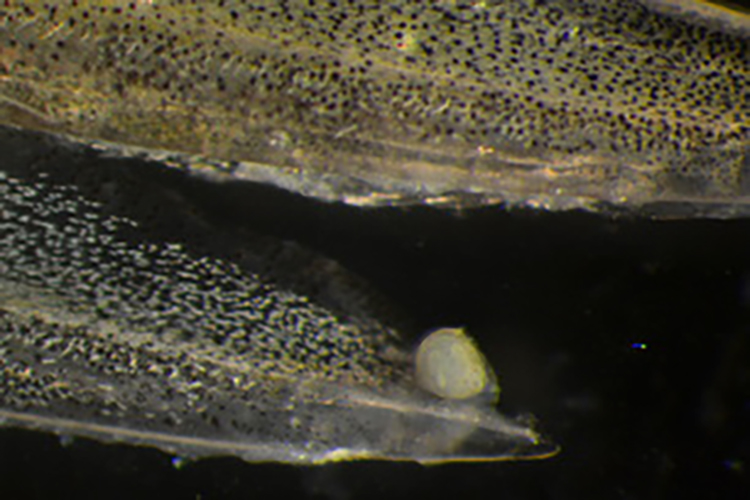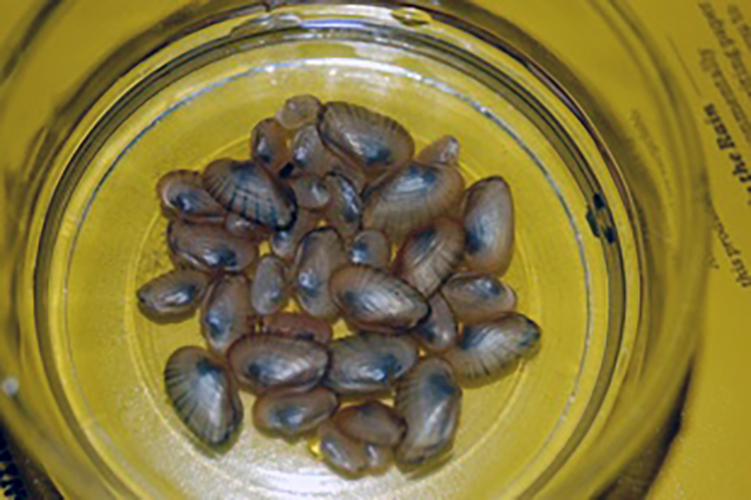The Mussel-Host Relationship
Almost all of the 300+ species in North America need a host for their larvae to reach the juvenile stage. The host needed for each mussel species is typically a fish, and sometimes only a very specific fish species will work. Many mussel species have complex adaptations that attract their hosts, from lures and bait, to entrapment of their host. Less than half of the mussel- host relationships have been studied in North America so far, including only 13 of the 52 mussel species found in Texas, and just a few of these in great detail.



Mussel Match Making
In order to understand and conserve our native mussels in Texas, we study the adult reproductive behaviors and host associations in the field and laboratory. We expose fish to mussel larvae and then quantify the degree of host ability to determine physiological hosts, and we look for fish in nature that have become parasitized naturally to determine ecological hosts. We also monitor mussel populations for reproductive behavior and possible methods of host attraction, while recording seasonal changes in the environment that may signal the mussels to begin this behavior.
In the Lab
During the process of successfully determining appropriate larval hosts in the laboratory, we produce juveniles, which we then culture and either use in experiments to further investigate the many unknown aspects of mussel biology, or raise to a size that can be marked and used to restart populations that have been extirpated from the species natural range. While we have a general idea of why many populations have disappeared, it is hard to know if some places are now able to support mussels without deploying a few new individuals to literally “test the water”.
Growing mussels from the size of a tiny grain of sand up to the size of a quarter is no small task. Juvenile mussels are very sensitive creatures and require daily attention and specialized culture systems and algal diets. The mussels filter algae from the water with their gills, which means that they are eating and “breathing” at the same time. We culture live algae and provide precise doses of food throughout each day to mussel culture systems, monitoring growth and survival closely. Mussels are very sensitive to environmental contaminants, and by producing juveniles in captivity we can provide toxicologists with test subjects for experiments that determine the effect of chemicals in the environment on mussel communities. This allows researchers to use individuals that are naive to foreign chemicals, are smaller than can be collected from nature, and prevents removal of individuals from wild populations.
